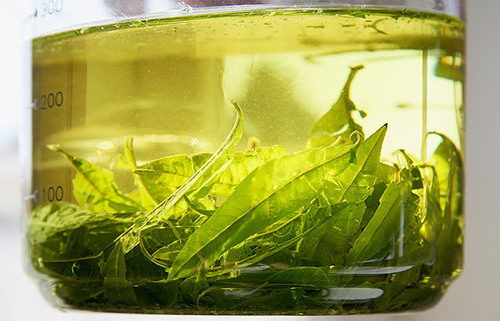Contents

The lemon verbena plant is another gift of the American flora, tomato, potato, and many more. In Europe, lemon verbena has been cultivated since the 18th century. Some people confuse lemon verbena and vervain; however, these are different plants, which belong to totally different botanical families.
Lemon Verbena Scientific Facts
- Other names: Herb Louise, Aloysia citriodora L.
- French: Verveine odorante.
- Spanish: Hierba luisa.
- Environment: Native to Chile and Peru, it has been naturalized in Europe, where lemon verbena is cultivated as an ornamental and aromatic plant.
- Description: Small shrub of the Verbenaceae family, growing up to two meters high. It has lanceolate, rough leaves which have an intense lemon scent when rubbed. Its flowers are violet or lilac in color and grow in bouquets.
- Parts of the plant used medicinally: The leaves.
Healing Properties and Indications


The whole plant, and especially its leaves, contains an essential oil that consists of more than one hundred substances, among which the most outstanding are citral, limonene, and caryophyllene. This essence gives the plant digestive, antispasmodic, and carminative (promotes gas expulsion from the digestive system) properties. Lemon verbena is recommended in the following cases:
- Digestive disorders: acute dyspepsia (indigestion or upset stomach), chronic dyspepsia (slow digestion), and flatulence.
- Menstrual pain (dysmenorrhea), gall bladder, and kidney colic due to its antispasmodic properties.
- It is also recommended for different types of nervous system disorders, especially for anxiety, since in many cases, the results achieved are better than those of chemical tranquilizers, not causing side effects as the latter do.
How to use Lemon Verbena
- Infusion with 30g of leaves per liter of water. Drink a hot cup after each meal. This infusion has a delightful flavor.
DISCLAIMER: All content on this website is presented solely for educational and informational objectives. It would be best to not rely on the information provided as a replacement for advice, diagnosis, or treatment from a qualified medical expert. If you are pregnant, nursing, or have any preexisting medical concerns, you should talk to your doctor before using any herbal or natural medicines.
REFERENCES
- George D. Pamplona-Roger, M.D. “Encyclopedia of Medicinal Plants.” George D. Pamplona-Roger, M.D. Encyclopedia of Medicinal Plants. Ed. Francesc X. Gelabert. vols. 2 San Fernando de Henares: Editorial Safeliz, 2000. 459. Print. [lemon verbena plant]
- European Medicines Agency. (2010). Assessment report on Aloysia citriodora Palau, folium.
- Jovel, E. M., Cabrita, L., Figueiredo, A. C., & Cunha, A. P. (2019). Chemical composition and biological activities of Aloysia citriodora Palau essential oils: An overview. Molecules, 24(16), 2983.
- Jouad, H., Haloui, M., Rhiouani, H., El Hilaly, J., & Eddouks, M. (2001). Ethnobotanical survey of medicinal plants used for the treatment of diabetes, cardiac and renal diseases in the North centre region of Morocco (Fez–Boulemane). Journal of Ethnopharmacology, 77(2-3), 175-182.
